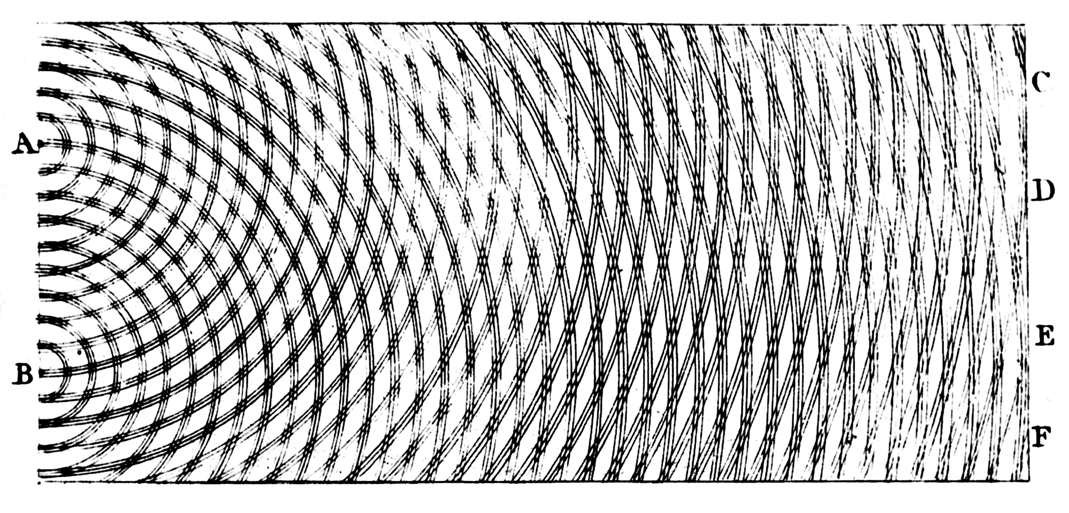
In 1803 Thomas Young (1773–1829) published a drawing (Figure 1) that explained how light passing through two narrow slits (A and B in the diagram) gave rise to alternate bright and dark ‘fringes’ on a white card. Young’s doubleslit demonstration provided the first real evidence for light behaving as a wave. At positions C, D, E and F, waves diffracted by the two slits arrive in phase, giving bright light. Mid-way between these positions the waves are in antiphase so they cancel one another to produce darkness. For a given arrangement of slits and card, the distance between the bright fringes depends on the wavelength of the light. If white light is used, the fringes are ‘rainbow-coloured’ (Figure 2).
Diffraction underlies many optical phenomena, including the colours seen when light is reflected from a CD, and the effect known as iridescence (Figure 3), sometimes seen in clouds when sunlight is diffracted by small water droplets. Diffraction is not restricted to visible light but occurs when any radiation encounters obstacles or gaps comparable in size to its wavelength. On pages 10–13 you can read about X-ray diffraction and find out how it has contributed to our knowledge of the physical world.
Your organisation does not have access to this article.
Sign up today to give your students the edge they need to achieve their best grades with subject expertise
Subscribe
